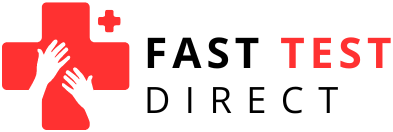
Understanding Rapid Tests: Fast and Convenient Medical Tools
Rapid tests are designed to quickly diagnose diseases or conditions from the comfort of your home. These devices detect specific substances in biological samples like blood, urine, or saliva, delivering results in just seconds to minutes.
Manufacturers of modern rapid tests often boast high accuracy rates, ranging from 92% to 99%. However, while these tests are useful, they do not replace laboratory tests and are best used when immediate medical consultation is not possible. They are also valuable for monitoring health during ongoing treatments.
Advantages of Rapid Tests:
- Speedy Results: Rapid tests provide quick outcomes, enabling timely health decisions.
- Accessibility: Available at local pharmacies, they offer a convenient option for immediate use.
- Ease of Use: Simple to perform with minimal specialized skills required; users just need to follow the instructions.
How Rapid Tests Work
Rapid tests come in various formats, such as paper strips, panels, or cassettes, each containing specific chemical reagents. These tests can be either qualitative, indicating the presence or absence of a substance, or semi-quantitative, providing an estimate of its concentration.
Most rapid tests use an immunochromatographic assay method. This involves a reaction between antibodies and antigens in the sample. As the sample fluid moves across the test strip, it interacts with specific antibodies. If the target antigen is present, it binds to the antibody, creating a visible mark on the test area. The unbound antibody then moves to the control zone, where it reacts with secondary antibodies to produce a second colored band, confirming the test's proper function.
Recommendations for Using Rapid Tests:
- Follow Instructions: Adhere to the provided instructions regarding testing times, result evaluation, and sample collection.
- Check Expiry Dates: Ensure the test is not expired, as outdated tests may be less accurate due to reduced sensitivity.
- Inspect Packaging: Verify that the packaging is intact before use to ensure test reliability.
It's important to remember that rapid test results are not definitive diagnoses. Consulting a healthcare professional for further evaluation and potential laboratory confirmation is essential for accurate diagnosis and treatment.
In summary, rapid tests are a practical option for initial screening or health monitoring, offering convenience and speed. However, they should always be supplemented with professional medical advice and comprehensive diagnostic procedures for reliable healthcare decisions.




